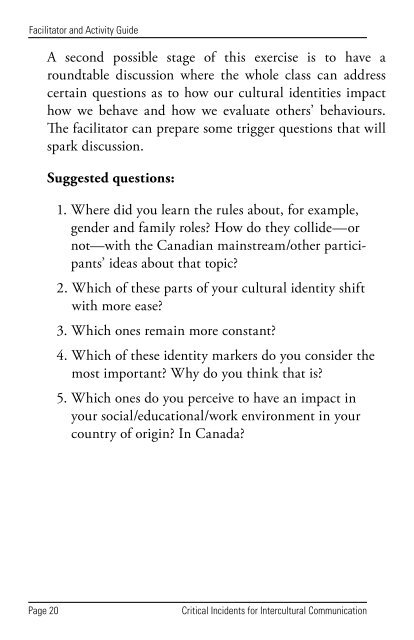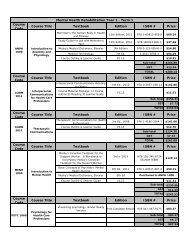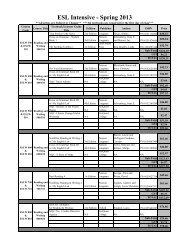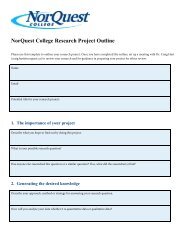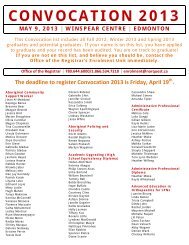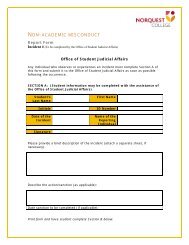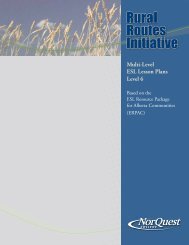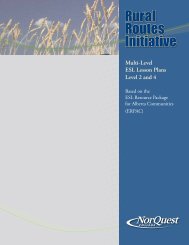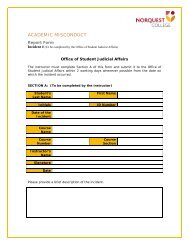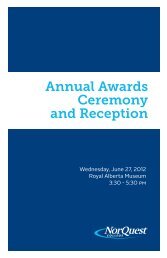Critical Incidents for Intercultural Communication - NorQuest College
Critical Incidents for Intercultural Communication - NorQuest College
Critical Incidents for Intercultural Communication - NorQuest College
- No tags were found...
Create successful ePaper yourself
Turn your PDF publications into a flip-book with our unique Google optimized e-Paper software.
Facilitator and Activity GuideA second possible stage of this exercise is to have aroundtable discussion where the whole class can addresscertain questions as to how our cultural identities impacthow we behave and how we evaluate others’ behaviours.The facilitator can prepare some trigger questions that willspark discussion.Suggested questions:1. Where did you learn the rules about, <strong>for</strong> example,gender and family roles? How do they collide—ornot—with the Canadian mainstream/other participants’ideas about that topic?2. Which of these parts of your cultural identity shiftwith more ease?3. Which ones remain more constant?4. Which of these identity markers do you consider themost important? Why do you think that is?5. Which ones do you perceive to have an impact inyour social/educational/work environment in yourcountry of origin? In Canada?A cultural approach 7Facilitator and Activity GuideAn additional perspective on the onion metaphor is onedeveloped by Edmonton’s Multicultural Health BrokersCo-op in their work with immigrants and refugees. In thismodel, which takes into consideration the influences ofmigration, the outer layer represents pre-migration history,the middle layer represents migration history including settlement,and the inner layer represents individual factors.This model is another important piece <strong>for</strong> our understandingof culture. Culture is historical and dynamic, and thereSurface behaviours areinfluenced by beneaththe-surfacevalues andLevel ofObservable/AwarenessBehavioralassumptions.Cognitive LevelEmotional Levelare many components that influence identity as well as thelens through which individuals will interpret their environment.With this model, participants are introduced to thecomplex and dynamic nature of culture and possibly moveaway from the tendency to essentialize culture as a staticand monolithic entity.9Page 20<strong>Critical</strong> <strong>Incidents</strong> <strong>for</strong> <strong>Intercultural</strong> <strong>Communication</strong><strong>Critical</strong> <strong>Incidents</strong> <strong>for</strong> <strong>Intercultural</strong> <strong>Communication</strong> Page 21


